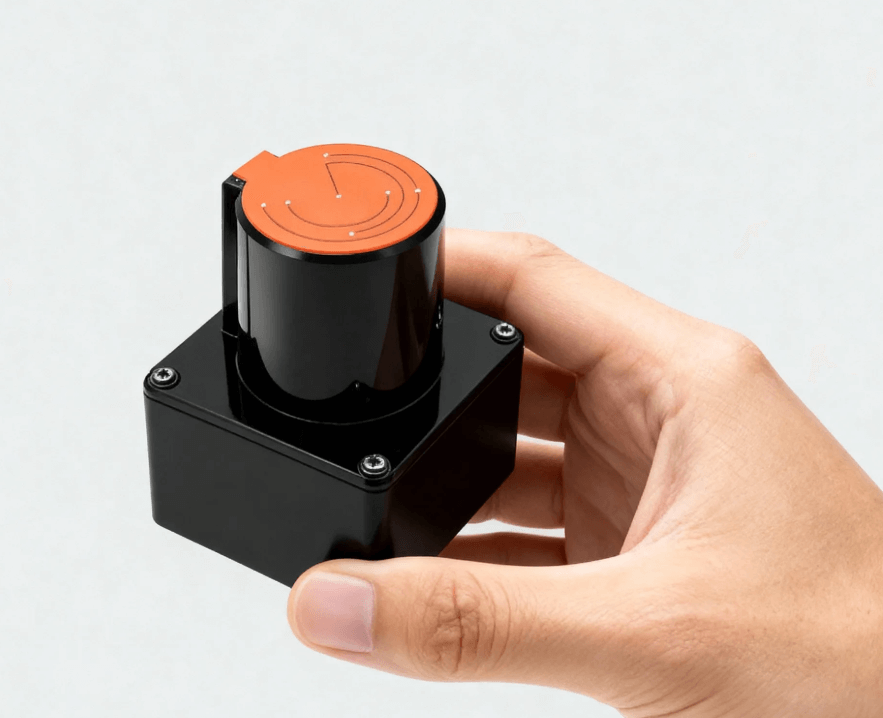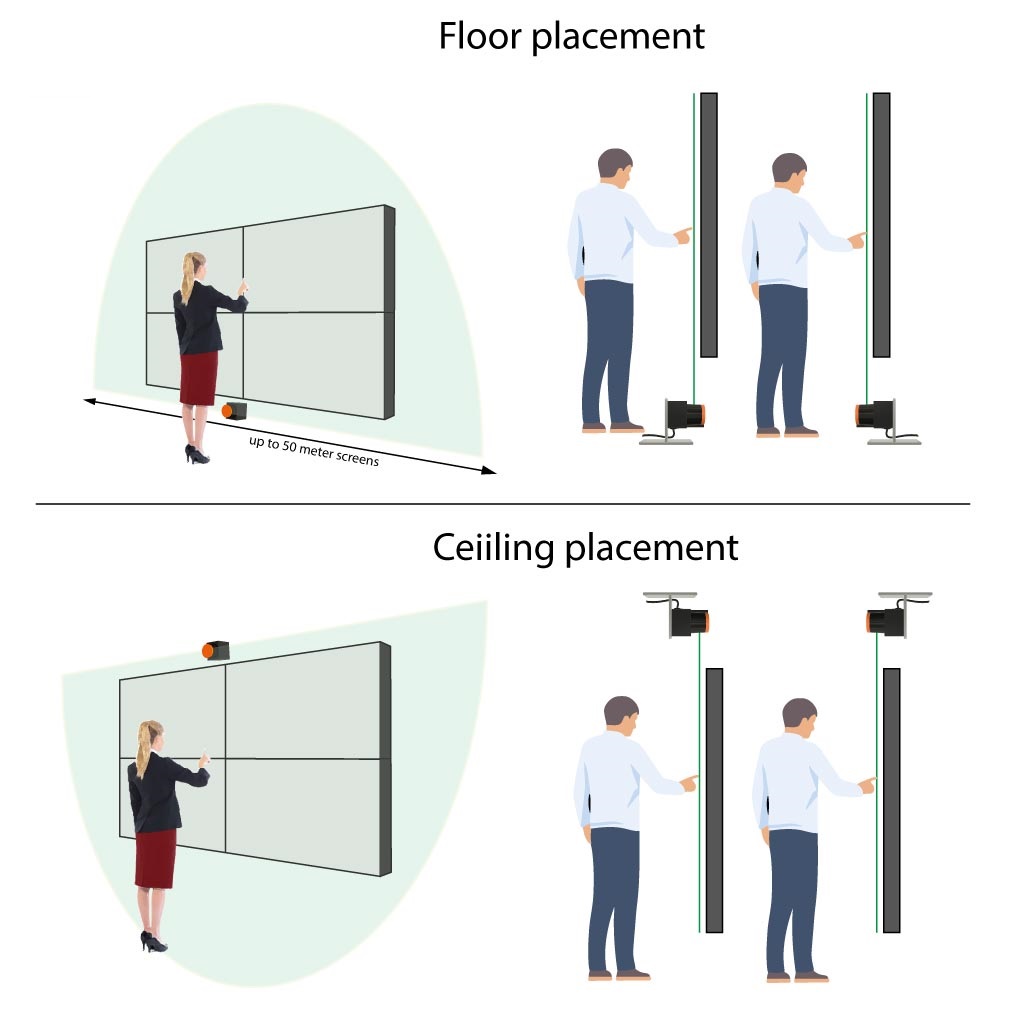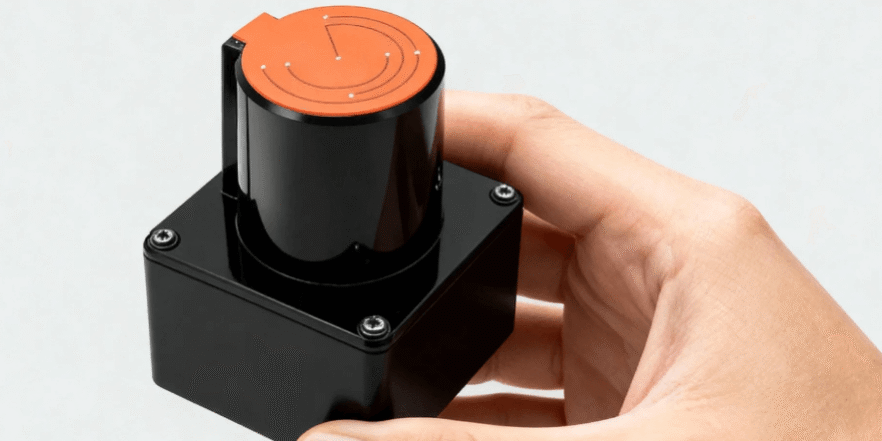Introduction: The Evolution of Touch Interaction
In the past, interaction meant physical contact — from tapping smartphone screens to touching digital kiosks. But as technology advances, the boundaries of “touch” are being redefined.
Today, LiDAR (Light Detection and Ranging) technology makes it possible to interact with invisible walls of light — allowing users to control digital content through gestures, without any physical surface.
This innovation is transforming education, retail, exhibitions, and entertainment, offering immersive and contactless interaction experiences.

What Is LiDAR and How Does It Work?

LiDAR works by emitting laser pulses and measuring the time it takes for the light to bounce back after hitting an object.
By calculating these reflections, LiDAR creates a high-precision 3D map of the environment — detecting even small gestures in the air.
Unlike traditional sensors, LiDAR provides:
- High-resolution spatial mapping
- Accurate distance measurement
- Fast real-time response
- Wide-area coverage
These characteristics make LiDAR ideal for interactive projection systems, multi-touch walls, and gesture-based control environments.
How LiDAR Creates Multi-Touch Walls in Mid-Air
LiDAR can project an invisible detection field across a wall or open space. When a hand, ball, or any object enters this field, LiDAR senses the disturbance in reflected light — determining location, speed, and trajectory.
By integrating high-speed sampling, SLAM algorithms, and POE-based communication, LiDAR systems can:
- Detect multiple touch points simultaneously
- Recognize complex gestures (like swipe, pinch, or throw)
- Support interactive wall games and learning experiences
This allows users to “touch” digital content floating in mid-air, turning any wall into an interactive canvas.
Applications of LiDAR Interactive Walls
LiDAR-powered multi-touch walls are increasingly used across various industries:
1. Education and Training
Interactive LiDAR walls make learning more dynamic. Students can interact with visual content using gestures, enhancing engagement and retention.
2. Exhibition and Museums
Visitors can “touch” virtual artifacts or trigger animations with simple hand movements — creating immersive storytelling experiences.
3. Retail and Advertising
LiDAR-based walls attract attention and engage customers with interactive product showcases and virtual fitting rooms.
4. Sports and Gaming
From wall-ball games to reaction-based training, LiDAR enables safe, touchless gameplay that reacts instantly to players’ movements.
Advantages Over Traditional Touchscreens
| Feature | Traditional Touchscreen | LiDAR Touch Wall |
|---|---|---|
| Interaction | Requires physical touch | Gesture-based, contactless |
| Durability | Surface wears over time | No surface contact |
| Hygiene | Prone to fingerprints & bacteria | 100% touch-free |
| Scalability | Limited size | Expandable to entire walls or floors |
| Maintenance | Frequent cleaning & calibration | Minimal upkeep |
LiDAR touch technology not only improves user experience but also aligns with the post-pandemic demand for hygienic, touchless interaction.
Why LiDAR Sampling Rate and Detection Range Matter
The sampling rate determines how frequently the LiDAR sensor collects data points per second — influencing precision and responsiveness.
A higher sampling rate ensures accurate gesture tracking, even for fast-moving objects.
Meanwhile, the detection range defines how far the LiDAR can sense objects. For indoor wall interaction, a range of 3 to 20 meters is typically ideal.
Choosing the right combination of these two factors ensures smooth, lag-free multi-touch performance across large spaces.
CPJROBOT: Redefining Interaction with POE LiDAR Technology
CPJROBOT is a professional manufacturer specializing in POE interactive LiDAR and reception/navigation robots.
Their LiDAR modules feature:
- Plug-and-play POE connection for easy installation
- Free calibration software for accurate setup
- High sampling rate and wide detection range
- Compatibility with interactive projection systems and wall games
From smart exhibitions to commercial venues, CPJROBOT’s LiDAR technology enables seamless human-computer interaction that feels futuristic yet practical.
FAQs About LiDAR Multi-Touch Walls
Q1: Is LiDAR safe for human interaction?
Yes. LiDAR used in interactive applications operates at eye-safe infrared wavelengths, posing no risk to users.
Q2: Can LiDAR detect multiple users at once?
Absolutely. Modern LiDAR systems can track multiple touch points or users simultaneously with high precision.
Q3: Does ambient light affect LiDAR accuracy?
Advanced LiDAR systems are designed with strong anti-interference algorithms, maintaining stable performance even in bright environments.
Q4: What is the installation requirement for LiDAR interactive walls?
Most setups require only a LiDAR sensor, a projector, and a computer system — making it easy to integrate into existing spaces.
Q5: Can I customize my LiDAR system for unique applications?
Yes. CPJROBOT offers customized LiDAR hardware and software to match specific installation needs and creative applications.
Conclusion
LiDAR is transforming the way people interact with digital environments — bringing touchless, immersive, and intuitive control to walls, floors, and even mid-air.
As LiDAR continues to evolve, it’s becoming the backbone of next-generation interactive spaces.
Looking to create your own interactive wall or gesture-based projection system?
Contact CPJROBOT to explore our POE LiDAR solutions and unlock limitless creative possibilities for your next project.







